We interview George about Internet Crusader, a squeamish story told on screens that’s our best sequential art book of 2019.
1996, and the internet is still a unique concept slowly creeping into people’s homes.
That same year sees an issue of the official X-Files comic book series revolving around the killings of computer game devs, drawn mostly by Walking Dead legend Charlie Adlard except for Miran Kim’s photo-realist yet surreal murder scenes.
In a sequence of strange, eerie panels we look out the eyes of a killer ‘possessed’ by artificial intelligence, an early example of meta-media tech-paranoia in the visual medium, predating The X-Files TV show’s own excursions into cyberpunk matrixes.
A more recent example of squeamish screen capture is 2018 missing person thriller Searching, arguably the first successful example in cinema of an entire narrative played out on desktop screens and smartphones. Another of note is Youtube phenomenon Petscop, a fragmented series of uploads purporting to be a playthrough of a never-released PS1 game which the narrator’s stumbled across in the present.
That game too has ‘missing’ persons at its heart; the whole concept of Petscop is that the uploads are meant for narrator Paul’s absent friend, no longer around to play the game with Paul. There are also some dark allusions to real-life murder victim Candace Newmaker, thus amplifying the creep factor in a narrative that feels like David Lynch doing ‘creepypasta’ for the Playstation.
In neat synchronicity, a missing friend kickstarts the narrative of art book Internet Crusader, our best sequential art book of the year which comes written and drawn by – neatly enough – one of our best-tipped illustrators of 2019, George Wylesol.
In our interview over (hopefully private) email, George notes Searching as giving him the push he needed to finish the book, a darkly whimsical tale that also plays out entirely on a computer screen.
“I saw Searching when I was about halfway done making Internet Crusader and I was surprised at how fluid and natural it was,” the Baltimore-based artist writes. “I thought it was going to be boring, but the story moved quickly and was definitely watchable. That actually gave me some confidence that Internet Crusader could work as book.”
Set during the dial-up days of the internet between an undefined point between ’96 and Iraq War 2, George’s first major long-form tale is a high-concept one. Centered around a teen boy’s entanglement with a Satanic cult ensnaring people around him via junk mail, it then follows his quest to defeat it once he enters a first-person shooter at the behest of none other than God Himself.
The book is a revelation for anyone who knows George simply for his unique still life scenes of urban alienation, like an Edward Hopper on LSD flashback. The artist masterfully carries over that same unsettling aura of his into narrative form by filling his pages more with objects than people, letting email text tell his tale as opposed to speech bubbles and thought captions.
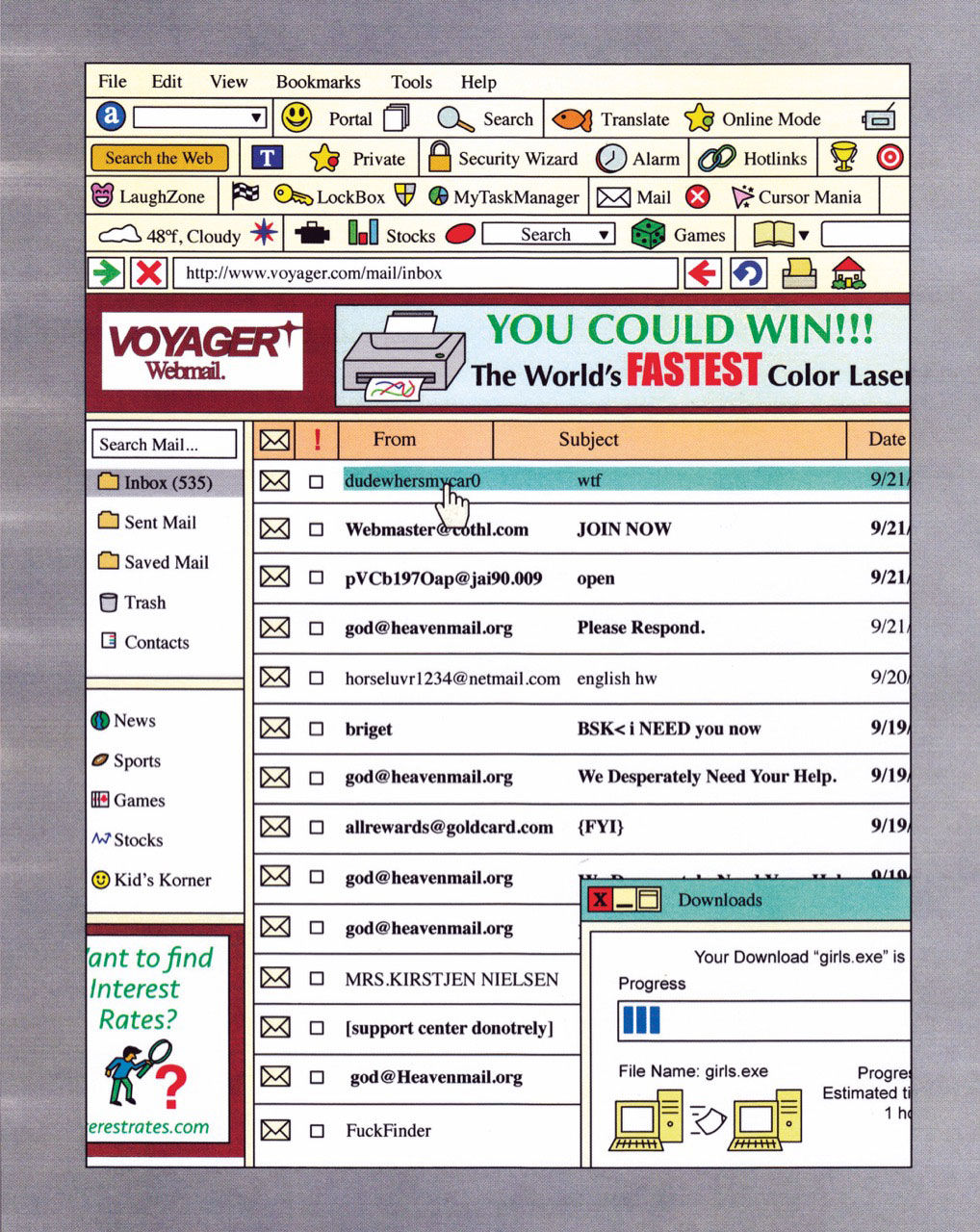
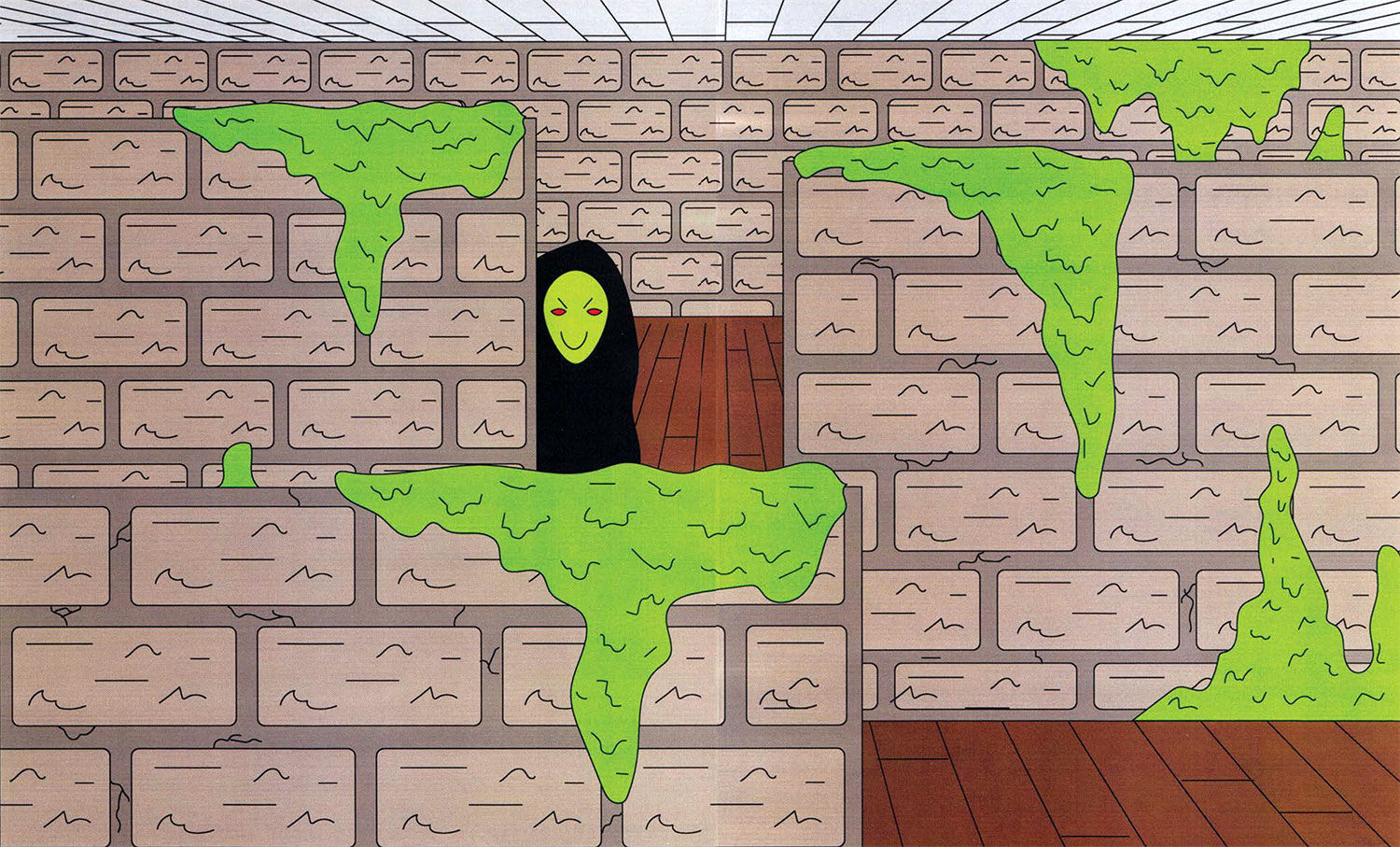
Desktop icons and pop-up ads litter the pages, as observed by our protagonist before he descends into medieval horrorscapes.
“From the start, I wanted the book to be really dense visually, and I wanted each page to have a lot of text and design elements,” George tells me when I ask how he set about constructing a narrative around these elements. “I was just keeping some design and hierarchy fundamentals in mind when making each page, but I wasn’t concerned so much with traditional L to R readability. I actually kind of wanted the viewer to have to spend some time with each page and really read everything.
“Most of the important information is front-and-center, but there’s a couple key points that I mostly hid. I think going back and forth between different parts of the book, and rereading something you might have overlooked is part of the fun.”
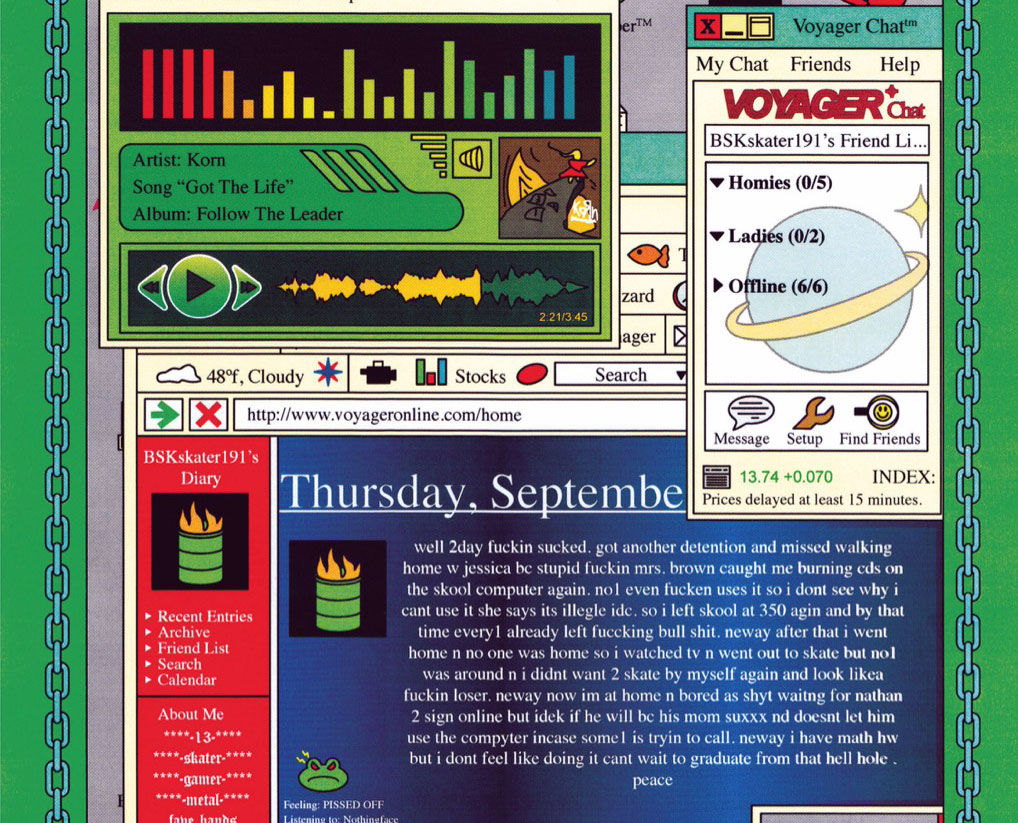
The reader is helped by an ingenious use of borders on George’s part, which change style and colour depending on where the action is unfolding.
“The borders were originally just an aesthetic choice. I didn’t like having the art bleed off the page, so I decided to put a frame around everything. I also wasn’t sure exactly what the trim size would be and how much bleed I’d need, so I put this border around each page so I wouldn’t have to worry so much about bleed and gutters.
“Once the art was finished I went back into the borders and designed them to help with the reading; each different style of border tells the viewer where we are and who’s talking. So like, the main character’s blog has that green and blue chain pattern, each level of the game has a different pattern, the game interface has a gray stone pattern, etc.”
That main character is BSKskater, a “13-year-old shithead” to use George’s words, a 90s equivalent of today’s shitposting teens and maladjusted adults, who’s very different to the quiet, sensitive persona of Petscop‘s Paul.
The way George’s demon slayer writes IMs and emails bears all the hallmarks of kids into their dank memes and such, giving the book a tongue-in-cheek brevity to counteract the often queasy artwork on view.
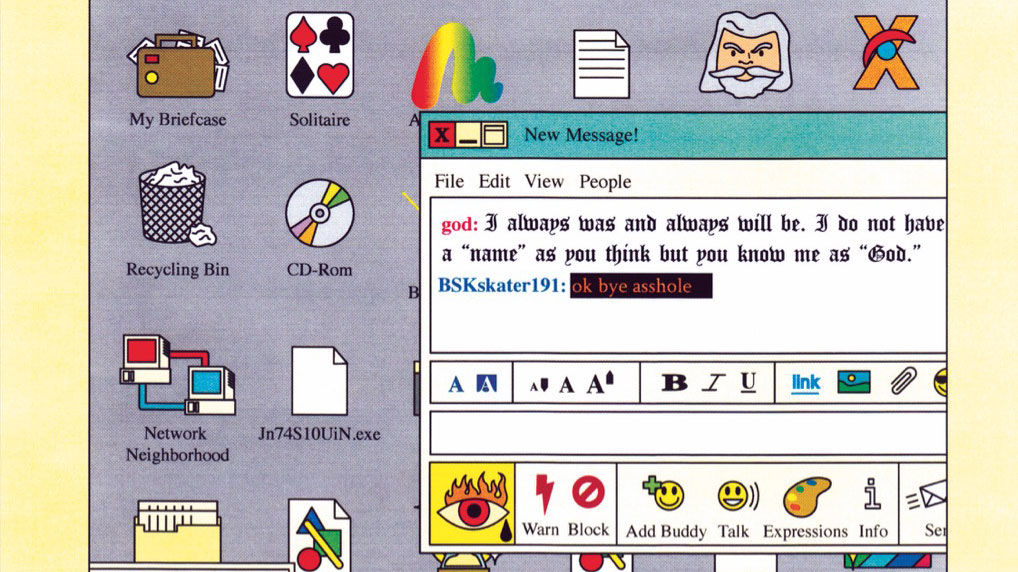
“I thought conveying characters through what they write was easier for me personally than drawing them.
“I’m really bad at drawing faces and expressions, and I hate drawing people, so I think this way of showing the characters was more fun for me.
“It came down to keeping their voice, language, and ‘typing style’ consistent. Also ‘branding’ each character with different typography and iconography was important too. I had to keep their personalities in mind, and keep putting myself in their shoes to figure out how they’d handle themselves in this situation.”
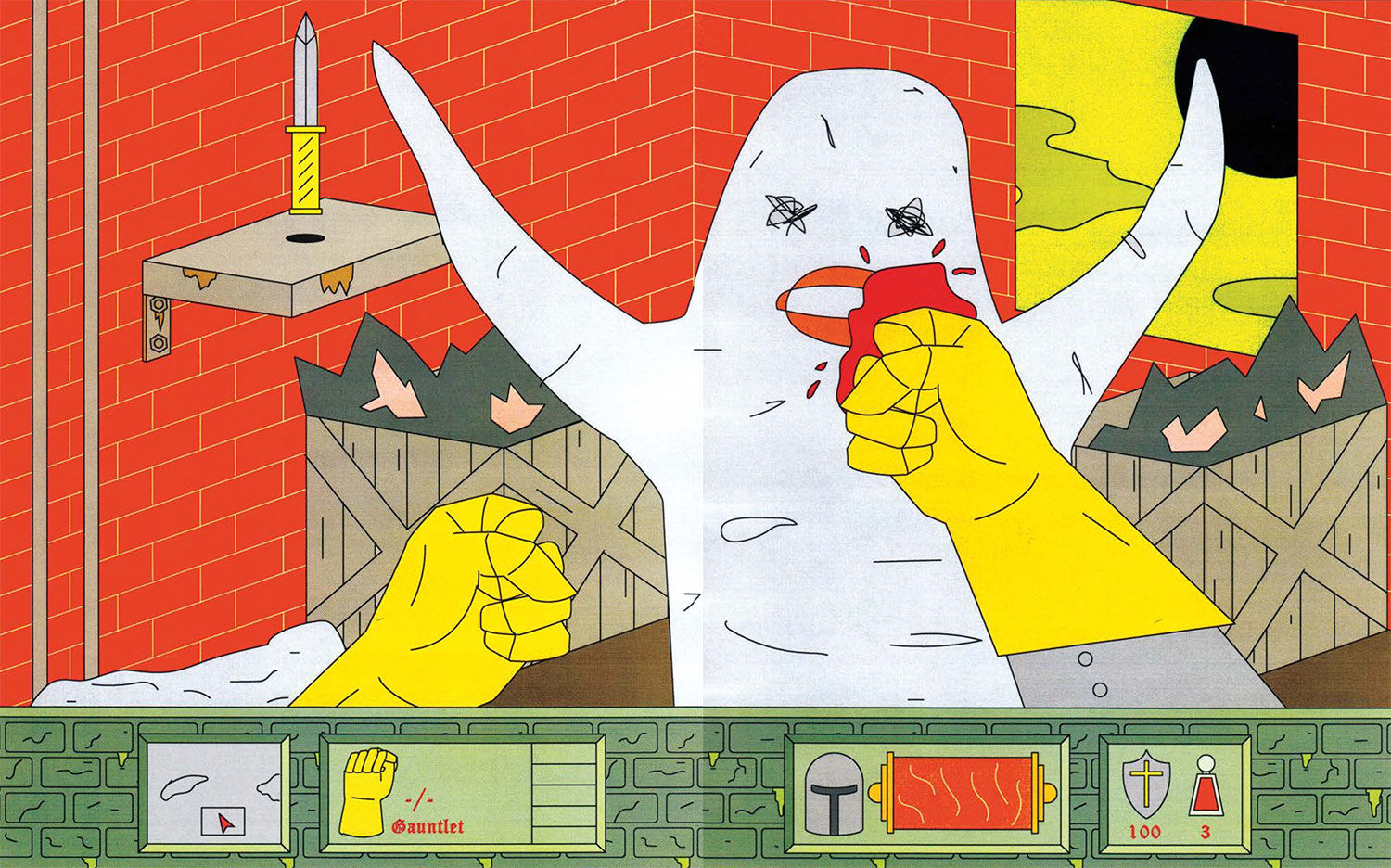
The book’s roots reside in George’s own youth, having been inspired by old sketchbooks from the mid-2000s that he recently uncovered.
“I found some pages where I used to just draw exactly what was on my computer screen at the time,” he explains. “I thought that was a cool concept so I started doing some AI drawings of computer screens in late 2017. I wanted the drawings to have a fun conceptual tie-in, so I thought about a virus that was actually a demon or something.
“After doing a couple random studies like this, I thought the concept had a lot of potential, so I decided to work it up into a full-length graphic novel.”
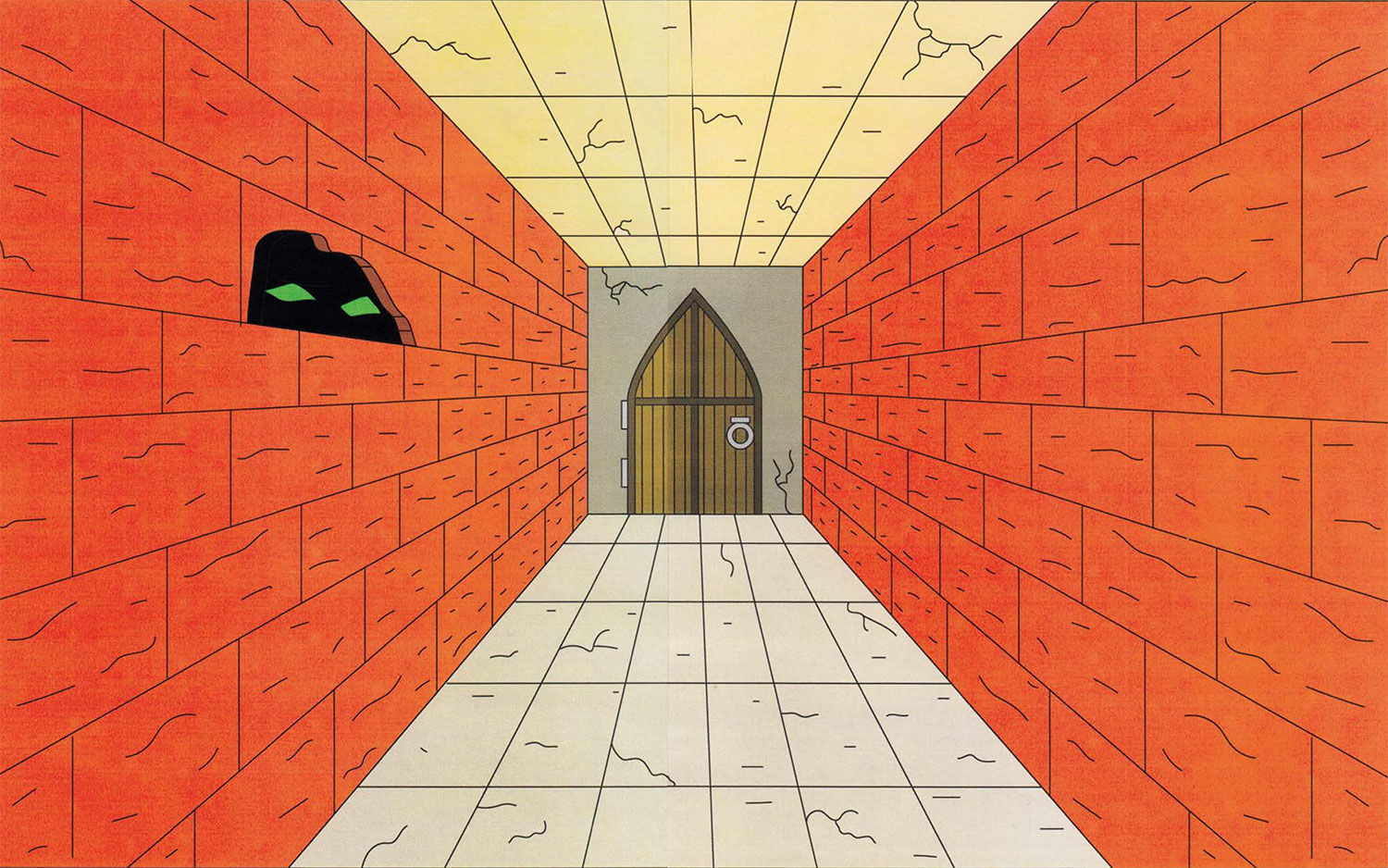
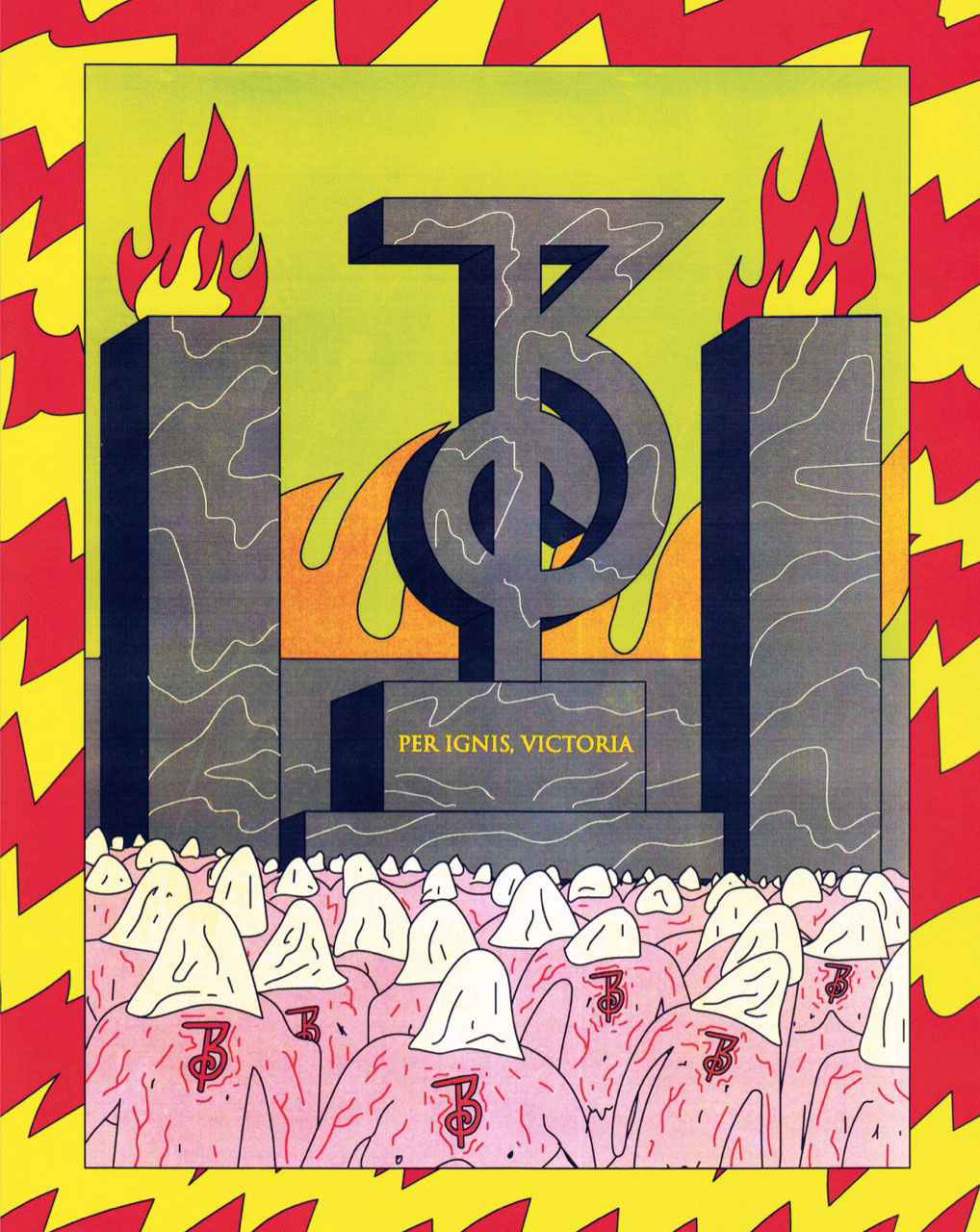
Internet Crusader also owes a debt to the early days of dial-up internet, of course.
“I was born in 1989 so I basically grew up alongside the internet. That period from the late 90s-mid 2000s is near and dear to my heart, so it’s really just me paying tribute to an overlooked time period in our culture.
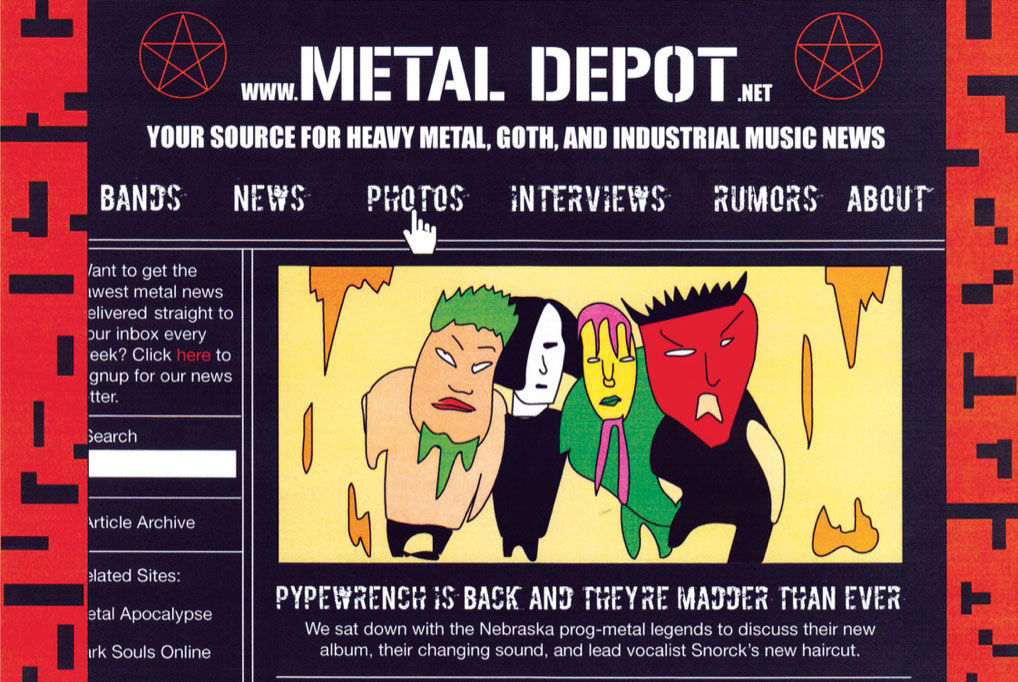
But what was George’s go-to website during those glory days of Internet 1.0?
“Ha, I basically lived on IGN.com when I was in like elementary and middle school,” he replies. “I was a huge video game nerd back then.”

Internet Crusader by George Wylesol is out now on Avery Hill Publishing.
Read next: George Wylesol’s brilliant lo-fi artworks
https://www.digitalartsonline.co.uk/features/illustration/george-wylesols-new-book-is-demonic-take-on-90s-internet/

